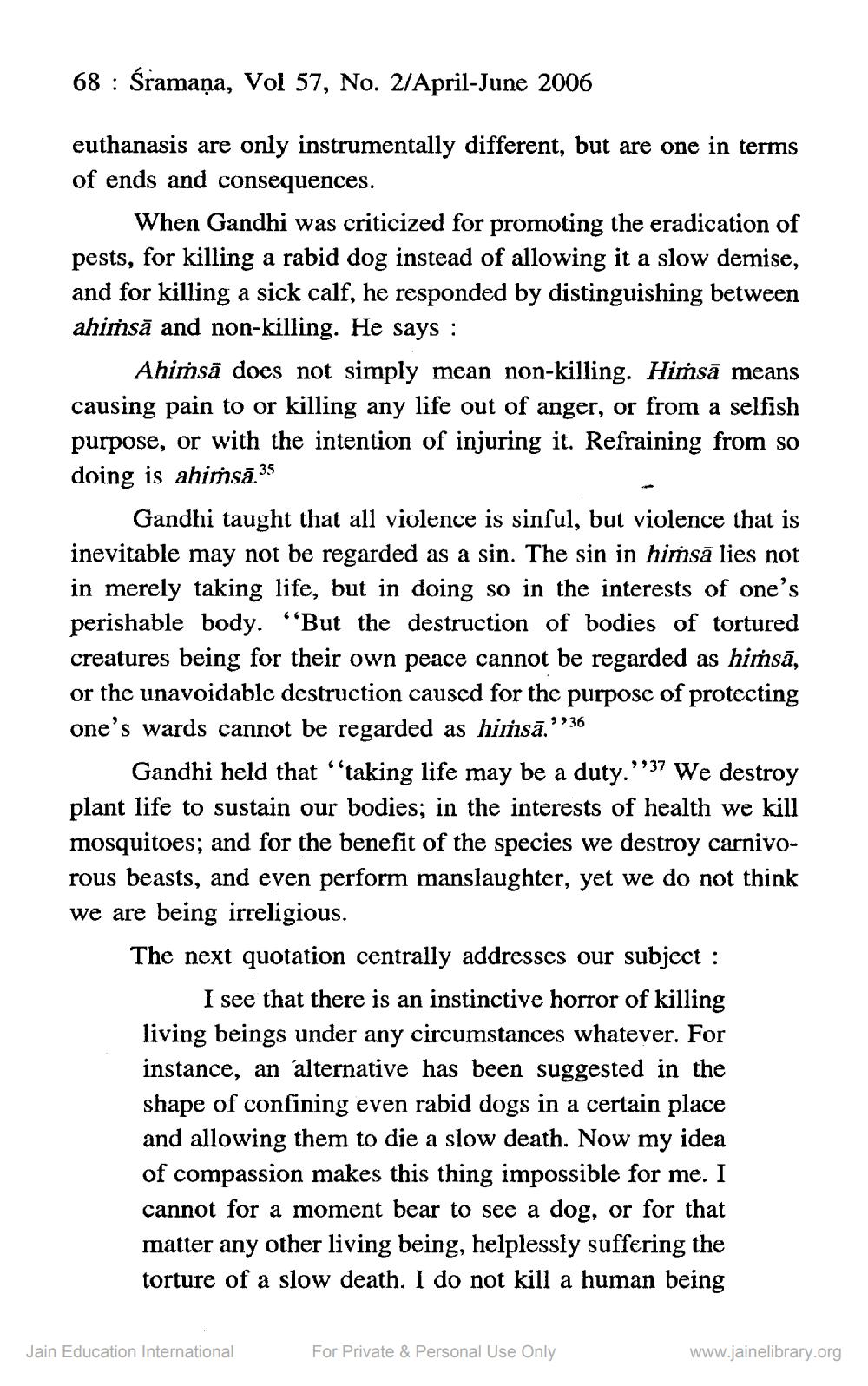________________
68 : śramaņa, Vol 57, No. 2/April-June 2006
euthanasis are only instrumentally different, but are one in terms of ends and consequences.
When Gandhi was criticized for promoting the eradication of pests, for killing a rabid dog instead of allowing it a slow demise, and for killing a sick calf, he responded by distinguishing between ahiṁsā and non-killing. He says :
Ahimsā does not simply mean non-killing. Himsā means causing pain to or killing any life out of anger, or from a selfish purpose, or with the intention of injuring it. Refraining from so doing is ahiṁsā.S
Gandhi taught that all violence is sinful, but violence that is inevitable may not be regarded as a sin. The sin in hiṁsā lies not in merely taking life, but in doing so in the interests of one's perishable body. “But the destruction of bodies of tortured creatures being for their own peace cannot be regarded as hiṁsā, or the unavoidable destruction caused for the purpose of protecting one's wards cannot be regarded as himsā.”'36
Gandhi held that “taking life may be a duty."'37 We destroy plant life to sustain our bodies; in the interests of health we kill mosquitoes; and for the benefit of the species we destroy carnivorous beasts, and even perform manslaughter, yet we do not think we are being irreligious. The next quotation centrally addresses our subject :
I see that there is an instinctive horror of killing living beings under any circumstances whatever. For instance, an alternative has been suggested in the shape of confining even rabid dogs in a certain place and allowing them to die a slow death. Now my idea of compassion makes this thing impossible for me. I cannot for a moment bear to see a dog, or for that matter any other living being, helplessly suffering the torture of a slow death. I do not kill a human being
Jain Education International
For Private & Personal Use Only
www.jainelibrary.org




